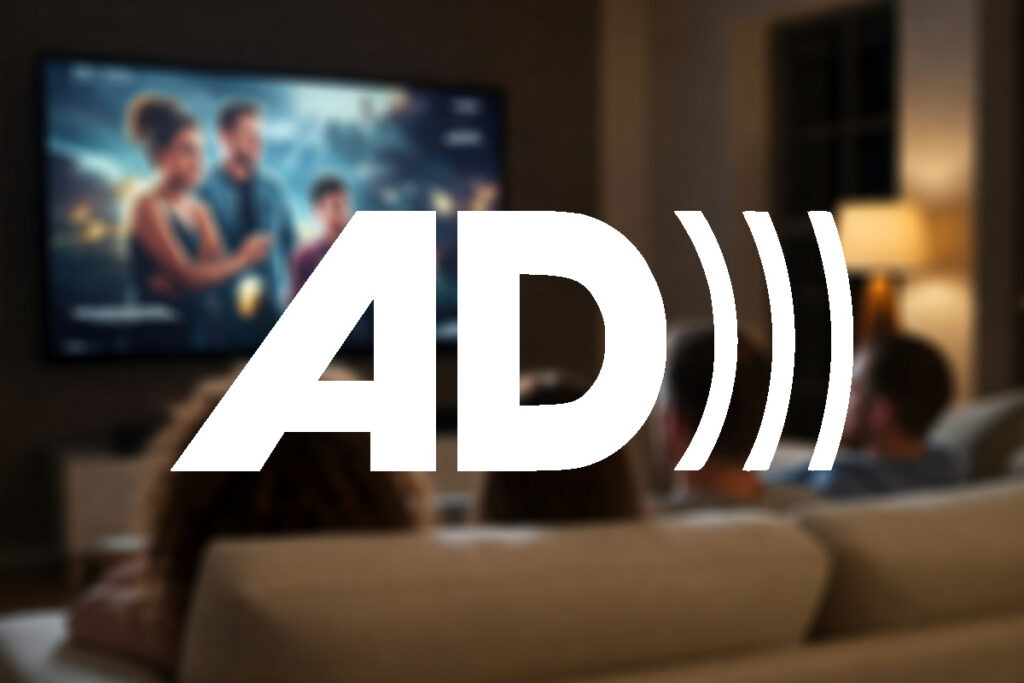Note: The creation of this audio description article was human-based, with the assistance on artificial intelligence.
Explanation of the success criteria
WCAG 1.2.5 Audio Description (Prerecorded) is a Level AA conformance level Success Criterion. It states that all prerecorded video content in synchronized media includes audio description.
This success criterion ensures blind or visually impaired users can access visual content in synchronized media. Audio descriptions, added during pauses in dialogue, convey key visual details like actions, characters, scene changes, and on-screen text not covered in the main audio.
You might be confused on the difference between this Success Criterion and 1.2.3: Audio Description or Media Alternative (Prerecorded) (Level A). I was. While 1.2.3 allows for using either audio description or a media alternative for prerecorded synchronized media, 1.2.5 Audio Description (Prerecorded) (Level AA) supersedes 1.2.3 by requiring audio description and not allowing for a text alternative as the alternative for prerecorded synchronized media. As Level AA conformance is the typical benchmark level of accessibility conformance, you should strive to comply with this success criteria.
Who does this benefit?
Prerecorded audio description primarily benefit people who are blind or have low vision, as they provide spoken narration that describes key visual elements of video content, such as actions, scene changes, gestures, facial expressions, and text on screen, that are not conveyed through dialogue or sound alone.
However, they can also be helpful for:
- People with cognitive or learning disabilities, who may benefit from additional spoken context
- Individuals in situations where they can’t look at the screen (e.g., multitasking or on the go)
- Language learners, who might gain a better understanding of what’s happening visually through narrated context
In short, this media alternative enhances access and understanding for anyone who may not be able to fully process the visual information in a video.
Testing via automated testing
Automated testing quickly flags missing audio description support, offering high scalability and rapid results by analyzing metadata or content structure.
However, automated testing cannot determine if key visual elements are adequately described, nor can it evaluate timing, sync with audio, or narration quality. It also fails to detect integrated audio descriptions, leading to a high risk of false positives or negatives due to reliance on metadata alone.
Testing via Artificial Intelligence (AI)
Like automated testing, Artificial Intelligence-based testing can detect the presence of audio descriptions by analyzing audio patterns, metadata, or gaps in speech. It offers good scalability through cloud-based processing and supports both near real-time and batch analysis for flexible, efficient evaluation.
Artificial Intelligence-based testing can identify objects or events in video but cannot confirm if all relevant visuals are described. While it can estimate synchronization between narration and visuals, precise alignment remains challenging. AI may assess speech clarity, but it cannot fully evaluate emotional tone or narrative quality. It might detect integrated audio descriptions based on content patterns, though it cannot confirm the creator’s intent. The risk of false positives or negatives is moderate and depends heavily on the quality of training data and content structure.
Testing via Manual testing
In manual testing of audio description, a human verifies if audio description is present (either separate or integrated). This type of testing thoroughly checks whether all essential visual elements are described and ensures audio descriptions are well-timed with the visuals. Human testers evaluate tone, clarity, pacing, and overall comprehensibility of the narration. They can also determine if key visuals are naturally integrated into the main audio track. When performed by trained testers, this method has a low rate of false positives and negatives, making it highly accurate.
Manual testing of audio description has low scalability, as it is time-intensive and requires a full review of each video. The process is slower, relying on real-time playback and human judgment, making it subjective and resource-heavy overall.
Which approach is best?
No single approach guarantees appropriate alternatives for audio-only and video-only content. However, using the strengths of each approach in combination can have a positive effect.
Use automated testing for quick detection of missing audio description support. AI-based testing offers scalable, semi-intelligent analysis. Manual testing remains the gold standard for assessing quality, context, and compliance; ideal for final review.
Related Resources
- Understanding SC 1.2.5: Audio Description (Prerecorded) (Level AA)
- mind the WCAG automation gap
- The Ultimate Guide to Audio Description – 3Play Media
- Audio Description for Media and Live Performance
- A11y 101: WCAG 1.2.5 Audio Description (Prerecorded)
- Captions and Transcripts and Audio Descriptions, Oh My!
- 1.2.5: Adversarial Conformance
